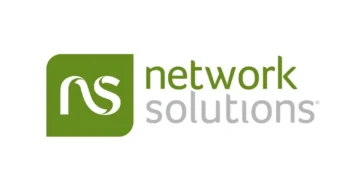What if a few clear choices could multiply how many people benefit and how long those benefits last?
This guide is a practical, ultimate resource to help organizations and individuals make difference decisions that leave the world better, faster, and at greater scale. We focus on measurable effects on wellbeing for people and others, framed by impartial, long-term thinking.
You will find a clear framework that moves from charity-style giving to measurable outcomes. We explain how to define goals, select metrics, collect data, and choose actions that maximize value while reducing negative effects.
Expect real tools, checklists, and examples across corporate practice, climate work, legal structures, and investing. We flag when rigorous methods, including randomized evaluations, matter so leaders can make smarter choices that change lives.

Key Takeaways
- Learn a step-by-step framework to increase long-term wellbeing.
- See why some ways of working yield far more value than others.
- Get tools to define goals, pick metrics, and collect usable data.
- Understand when rigorous evidence like randomized tests is needed.
- Apply practical checklists for nonprofits, businesses, and funders.
social impact
Precise language helps leaders turn good intentions into measurable long-term benefits.
Simple definition: Your social impact is the number of people whose lives you improve and by how much, measured over the long term.
Rigorous framing: Think of this term as promoting total expected wellbeing, judged impartially across individuals and groups and over time.
A simple and rigorous definition grounded in wellbeing and impartiality
Count direct benefits to a person and indirect ripple effects through families and networks. Ask clear questions: who benefits or is harmed, how large is the change, how long does it last, and what would have happened otherwise?
Positive and negative effects on people, groups, and the planet
Positive social examples include clean water, schools, job training, and tree planting. Negative effects can be pollution, unsafe work conditions, discrimination, or unfair wages.
Key practice: Use additionality and counterfactual thinking to test whether a program creates change that would not have occurred on its own.
Not all effects are equal: intensity and duration matter as much as the number of lives reached. Be transparent about claims and negative externalities so mission statements match measurable results in the world.
Why Social Impact Matters Now in the United States
The United States faces a narrow window to fix deep inequalities and systemic weaknesses that shape tomorrow.
Pressing issues include widening achievement gaps in standardized tests across racial and income groups, climate risks, public health disparities, and local economic decline that harm people and groups today.
Recent crises, including COVID-19, revealed how uneven shocks can worsen existing problems and create new vulnerabilities. That exposure creates clear opportunities to redesign systems with outcome-based reporting and greater transparency on positive and negative effects.
What we do now will compound over time. Early policy and investment choices can prevent larger harms and deliver durable benefits for society and the world.
Where to focus for the biggest returns
Prioritize high-leverage areas where U.S. decisions produce outsized gains domestically and globally. Coordinate across business, government, and the nonprofit sector with shared measurement and accountability.
Leaders should ask: which problems are most neglected, tractable, and significant, and where can our skills create the largest change? Move beyond incremental fixes to scale what works and sunset what does not.
From Philanthropy to Strategy: The Evolution of Impact
Over decades, charitable giving shifted from ad hoc acts to deliberate strategies that aim for measurable outcomes. Practitioners moved attention from inputs to results, reshaping how nonprofits, governments, and firms set priorities.
Historical shifts toward measurement and corporate practice
Early philanthropy emphasized volunteering and donations. Thoughtful articles and leaders then promoted research, evidence, and clearer goals. Funders began asking which programs actually solved problems.
Research-informed grantmaking raised standards for evaluation. That change pushed philanthropy toward outcome-oriented work that favors learning over anecdotes.
Meanwhile, corporate social responsibility moved from checkbook giving to integrated practice. Companies tied responsibility to branding, operations, and risk management.
Standards and public reporting improved comparability and credibility. Sustainable Development Goals helped align actors across the world on shared priorities.
Today, strategic philanthropy and CSR form parts of a continuum. Both demand clarity on theories of change and measurable results to produce positive social and social environmental change.
Principles That Make a Difference
Good principles turn limited resources into steady, measurable gains for many people. They help teams weigh trade-offs and choose where to direct effort so work makes the world better over time.
Impartiality
Impartiality means giving equal weight to equal effects on different people and individuals, including distant communities and future generations. Treat similar changes in wellbeing the same, regardless of proximity.
Expected value and long-term choices
Use expected value to compare actions under uncertainty. Weigh the scale of benefits by their probability, factor duration, and include risks to the future.
Simple checklist: scale of benefit, probability, neglectedness, tractability, and time horizon. Respect rights and common-sense moral limits while prioritizing high expected value.
Broaden your focus beyond familiar beneficiaries to include overlooked others. Build feedback loops to update estimates as new data arrives. These principles guide limited budgets toward where they can improve lives most fairly and transparently.
Building a Social Impact Framework That Works
Designing a clear scaffolding of goals, measures, and routines helps teams turn decisions into verified outcomes. A durable framework sets objectives, picks a few high-value indicators, and ties data back to real-world value for people.

Clear goals and objectives tied to priority issues
Start by naming the priority issues, target population, and the single goal you will track. Map a theory of change that links activities to outputs and long-term outcomes.
Choosing KPIs: outcome, impact, and performance metrics
Translate goals into outcome metrics (what changed), impact metrics (broader societal value), and performance metrics (execution quality). Pick a small set to avoid overload and focus learning.
Data collection, analysis, and transparent reporting
Set baselines, targets, and collection rhythms that feed decisions. Build data governance and ethical safeguards, mix qualitative insight with numbers, and publish clear reports that show successes, challenges, and course corrections.
Create decision rules that say what you will stop, start, or scale based on results and value for money. Embed continuous improvement so the framework evolves with new evidence.
Measurement Methods and Evidence Standards
C to make reliable decisions, teams must use methods that estimate causal effects, not just correlations.
Randomized evaluations and when to use RCTs
Randomized controlled trials (RCTs) randomly assign participants to treatment or comparison groups to estimate causal impact on outcomes. They offer rigorous, unbiased estimates when feasible and ethical.
Use RCTs to answer clear causal questions about specific programs with measurable metrics and acceptable risk. When random assignment is unethical or impractical, consider quasi-experimental alternatives like matched comparisons, difference-in-differences, or regression discontinuity.
Additionality and counterfactual thinking
Additionality is the idea that an intervention must increase value beyond what would have happened anyway. Define the term early and use it to attribute benefits to your work rather than to background trends.
Construct counterfactuals by comparing treated groups to credible controls, adjusting for baseline trends, and checking for spillovers to other people. Account for short- and long-term outcomes and for indirect effects outside the participant group.
Match evidence standards to the stakes: use higher rigor for costly, high-risk decisions and lighter designs for low-cost pilots. Protect data quality by planning sample size, tracking attrition, preregistering analyses, and guarding against bias.
Finally, synthesize findings through replication, systematic reviews, or meta-analysis so decisions rest on a balanced body of research rather than a single study. Aim for practical measurement that improves implementation, not just publications.
Corporate Social Responsibility and ESG in Practice
Embedding responsibility into operations turns one-off giving into measurable, lasting value. Companies must align policies, procurement, and governance to deliver results for people and the planet.
Beyond philanthropy: make responsibility core
Position CSR as part of core strategy: embed standards into supply chains, hiring, and product design. Tie executive pay and procurement to verified goals so projects produce real-world outcomes.
Standards, reporting, and emissions accounting
Use ESG criteria to evaluate environment stewardship, labor practices, and governance with comparable metrics. Report material effects with GRI standards so stakeholders see clear results on climate, rights, and corruption.
Scope 1, 2, 3 and decarbonization pathways
Inventory emissions under the GHG Protocol. Classify direct (Scope 1), purchased energy (Scope 2), and value-chain (Scope 3) sources. Set time-bound decarbonization targets that match science-based pathways.
Design projects that address risks to people and others across the value chain. Integrate climate risk, equity, and human rights due diligence into enterprise risk management and publish decision-useful disclosures to investors.
Legal Structures and Certifications for Credible Impact
Legal choices shape how a venture balances profit, mission, and accountability over time.
B Corp certification is a third-party credential from B Lab that verifies a company’s social environmental performance, accountability, and transparency. It is not a legal form, but it signals a commitment to higher standards.
Benefit corporation statutes are legal entities. They require directors to consider public benefits and often use independent standards to measure those goals. This legal form can protect mission when shareholder pressure grows.
Hybrid options and practical trade-offs
L3C structures attract program-related investments by blending charitable and commercial aims. Social Purpose Corporations enshrine a specific mission in corporate charters while allowing profit-making activity.
Certifications like Fair Trade, FSC, or Great Place to Work add domain credibility for food, wood, textiles, or workplace practices. They complement, but do not guarantee, outcomes.
Governance, fundraising, and when to choose which form
Align bylaws, board duties, and executive incentives with your stated goals to make claims credible. Good governance ties reporting, audits, and accountability to the mission.
Choose based on capital strategy and stakeholders: benefit corporation status helps when long-term mission matters to investors; B Corp certification aids market trust; L3C suits PRI-linked funding. Regularly review your form to ensure it still serves people and world value.
Nonprofits and Social Ventures Driving Outcomes
Organizations that blend hands-on programs and policy work often unlock the largest gains for underserved groups.
Direct services, policy advocacy, and research
Direct services meet urgent needs and improve lives now through training, clinics, or education. They show immediate benefits for people and groups.
Policy advocacy changes rules and funding so whole systems serve more people over time. It is the fastest way to scale effects beyond individual projects.
Research generates evidence that guides better choices and reduces waste. Use data to test what works before scaling.
Earned revenue models and scale pathways
Earned revenue—fees, sales, or contracts—diversifies funding and builds resilience. It lets ventures reinvest in programs while keeping mission focus.
Scale paths include organizational growth, model replication, government integration, regulatory change, and cultural shifts. Pick the way that fits the problem, unit economics, and evidence of effectiveness.
Governance and learning matter: strong boards, clear metrics, ethical safeguards, and people-first design improve quality and protect vulnerable populations. Combine service delivery with robust data to show outcomes, manage risk, and adapt as issues evolve.
Impact Investing and Innovative Finance
Blending patient capital with rigorous measurement creates new paths to durable outcomes. Impact investing aims for positive, measurable social impact alongside financial return. This section maps the financing tools and checks teams need to fund work that delivers verified benefits over time.
Instruments and how they fit a spectrum
Define the spectrum: grants, program-related investments (PRIs), patient capital, and market-rate impact investing each play a different part. Choose instruments to match risk tolerance, expected return, and the goals you will measure.
Evaluating value and structures that tie pay to results
Judge proposals on intentionality, additionality, measurement, and contribution to outcomes. Pay-for-success models (social impact bonds) transfer performance risk to investors and pay only when verified targets are met.
Diligence, support, and where opportunities lie
Ask about problem significance, evidence base, team capacity, and unit economics across time. Investors add value by offering flexible capital, technical assistance, or catalytic first-loss to support people-centered projects and scale what works.
Where to focus: neglected sectors, underserved geographies, and solutions with strong social environmental co-benefits. Emphasize research and learning: publish results, iterate theses, and align incentives across public, private, and philanthropic actors.
Integrate outcomes into portfolio management: set targets, monitor indicators, and adapt mandates. Well-structured finance can make the world better while honoring fiduciary responsibility and delivering predictable impact.
Designing Solutions: From Human-Centered Design to Lean Startup
Good design starts by meeting people where they live and work to solve real problems. Use human-centered methods to map needs, constraints, and local routines before proposing any solution.
Design thinking and user-centered methods
Engage communities directly: co-design workshops, ride-alongs, and shadowing reveal hidden barriers. Capture stories and simple diagrams to translate user insight into actionable prototypes.
MVPs, iteration, and pivots for better outcomes
Build minimal viable pilots that test core assumptions. Keep tests short, safe, and ethical so you learn without harming participants.
When data suggests a different path, pivot features, channels, or delivery models. Combine qualitative stories with quantitative signals to judge whether change is meaningful.
Practical ways to work: use place-informed design, lightweight experiments, and cross-functional teams that align delivery, data, and funding. Stay humble: test early and often to create more durable value for end users and others affected.
Collective Impact and Systems Change
Systems change depends on aligning diverse actors around shared goals and reliable data. Collective approaches unite governments, nonprofits, businesses, and community groups to tackle problems that no single actor can fix alone.
Common agenda, shared measurement, and backbone support
Define collective action: partners adopt a common agenda and agree on goals that focus on outcomes for people and others in affected communities.
Core elements: shared measurement, continuous communication, mutually reinforcing actions, and a backbone organization that keeps work coordinated and focused.
The backbone maintains data infrastructure, convenes stakeholders, and resolves priorities so groups stay aligned. Shared metrics increase accountability and speed learning across organizations.
Use systems maps to find leverage points—places where small policy or funding shifts change incentives and resource flows. Prioritize equity in representation so decisions reflect those most affected.
Highlight early wins to build momentum while pursuing long-term making world goals. Keep reporting transparent to sustain trust across society and the broader world.
Equity at the Core: Closing Achievement and Opportunity Gaps
Equity reshapes goals so resources meet people where they start, not where we wish they were.
Define equity as allocating resources proportionally to needs to remove disparities for groups and people. This shifts action from counting outcomes to changing the conditions that cause them.
Shifting focus from outcomes to the conditions that drive them
Differentiate the achievement gap (measured outcomes) from the opportunity gap (policies, practices, and place). Targeting conditions—housing, health, transit, and school funding—reduces downstream disparities.
Embed equity into governance, budgeting, and data disaggregation. Elevate lived experience when designing and evaluating services to raise value and effectiveness.
Set clear equity targets, report progress across society, and address structural issues like biased rules and unequal network access. Build organizational capacity and cross-sector partnerships to align incentives and resources.
Celebrate and scale approaches that improve outcomes. Candidly sunset programs that fail to close gaps so limited resources yield lasting change for others.
Climate and Environmental Impact Essentials
A clear carbon accounting system is the foundation for practical decarbonization and resilient operations.
Corporate carbon footprint, externalities, and offsets
Corporate carbon footprint totals direct and indirect greenhouse gas emissions in CO2e using recognized standards like the GHG Protocol. Scope boundaries (Scope 1, 2, 3) matter because they determine what emissions the company must measure and reduce.
Externalities are effects of production or consumption that fall on other people and communities. Negative externalities include pollution and health burdens that must be internalized through pricing, regulation, or operational choices.
Offsets fund emissions reductions or carbon removal elsewhere. High-quality offsets are verifiable, additional, permanent, and monitored. They can complement — but never replace — direct emissions reductions and decarbonization plans.
Decarbonization actions include energy efficiency, switching to clean electricity, low-carbon supply chains, and product redesign. Set measurable social environmental goals that tie climate action to health and equity co-benefits.
Prioritize suppliers and investments by lifecycle emissions and resilience. Align reporting with accepted standards to improve comparability and credibility. Engage employees and customers in behavior and product shifts to accelerate progress.
Finally, monitor and verify claimed reductions so they are real, additional, and durable. Focus on actions that demonstrably reduce emissions while helping the world better for current and future people.
Examples of Positive and Negative Social Impact
Concrete projects show how choices at the project level ripple across households and neighborhoods.

Real-world illustrations across people, communities, and environment
Positive examples include rural water systems that cut disease, community schools that raise attainment, workforce training that reconnects the unemployed to steady jobs, and urban tree planting that improves health and cooling. Buying from local producers strengthens place-based economies and resilience.
Negative examples include polluting factories, deforestation without replanting, unsafe workplaces, discrimination, and unfair wages that harm a person, families, and whole communities.
Direct effects come from immediate services or products. Indirect effects cascade: employment raises household income, which improves nutrition and school attendance. Measure these with enrollment rates, health visits, income change, emissions, and worker safety audits.
Design projects to capture environment co-benefits and avoid trade-offs. Use monitoring, third-party verification, and community feedback to refine programs, test scalability, and ensure solutions fit local priorities.
Actionable step: review your portfolio through this lens to increase net benefit for people, places, and others in the world.
Conclusion
When goals, measurement, and action align, effort compounds into measurable value for others. Align strategy with clear metrics, favor long-term wellbeing, and respect rights and character in every decision.
Use the short playbook: define goals, build a framework, measure credibly, learn fast, and scale what works. Emphasize social environmental co-benefits by linking climate, equity, and economic outcomes.
Make a difference now: pick one initiative to start or improve this month, set milestones, and assign accountability. Read further articles on evidence, design, finance, and systems change to deepen skills.
Uncertainty is real, but disciplined practice multiplies gains and saves lives over time. Collaborate across sectors to accelerate making world better and to leave the world better place for future generations.
FAQ
What does “Maximizing Social Impact” mean in practical terms?
It means designing and implementing actions that measurably improve wellbeing for people and communities while minimizing harm to the environment. Practically, this involves setting clear goals, choosing evidence-based interventions, tracking outcomes with reliable metrics, and adjusting tactics based on data so resources deliver the greatest net benefit over time.
How can I define the term in a simple, rigorous way?
Define it as the change in wellbeing—positive or negative—caused by an activity, policy, or organization, assessed impartially across affected groups and scaled to long-term effects. This keeps focus on measurable outcomes, equity, and expected value when decisions face uncertainty.
What are common positive and negative effects I should consider?
Positive effects include improved health, increased income, stronger education outcomes, and reduced emissions. Negative outcomes can be displacement, increased inequality, unintended environmental harm, or wasted resources. Good practice requires anticipating trade-offs and monitoring for unintended consequences.
Why does this matter now in the United States?
The country faces interconnected challenges—economic inequality, public health disparities, and climate risks—that demand efficient, equitable solutions. Decisions made today shape long-term trajectories for communities and ecosystems, so investing in high-quality interventions can yield large, lasting returns.
How has the field evolved from charity to strategic action?
It moved from goodwill-based giving toward measurement, accountability, and systems thinking. Corporate social responsibility, the rise of ESG frameworks, and the Sustainable Development Goals pushed organizations to link purpose with performance and to adopt metrics for outcomes rather than outputs.
What guiding principles lead to better outcomes?
Two core principles are impartiality—treating people’s wellbeing equally—and expected value—making choices that maximize benefits under uncertainty. Both encourage prioritizing interventions that help the most vulnerable and deliver the largest net gains per dollar.
How do I build a framework that actually works?
Start with clear, time-bound objectives tied to priority issues. Select key performance indicators that capture outcomes, impact, and operational performance. Collect quality data, analyze results regularly, and publish transparent reports so stakeholders can evaluate progress and trade-offs.
Which metrics should organizations choose?
Use outcome metrics that reflect changes in wellbeing (e.g., graduation rates, emissions avoided), impact-adjusted indicators that consider counterfactuals, and performance metrics for delivery (e.g., cost per beneficiary). Combine qualitative feedback with quantitative measures for fuller insight.
When are randomized controlled trials appropriate, and what are the limits?
RCTs are ideal when you can randomly assign interventions and measure outcomes without major ethical or logistical barriers. They offer strong causal evidence but can be expensive, slow, and sometimes infeasible for system-level or long-term questions. Complement RCTs with quasi-experimental and qualitative methods when needed.
What is additionality and why is counterfactual thinking important?
Additionality asks whether an action caused a difference that wouldn’t have happened otherwise. Counterfactual thinking constructs the best estimate of what would have occurred without the intervention. Both guard against overclaiming benefits and help prioritize high-leverage opportunities.
How should corporations approach responsibility beyond philanthropy?
Move from one-off donations to integrated practices: align core business strategy with social and environmental goals, adopt measurable ESG targets, and embed sustainability into operations, sourcing, and product design so positive outcomes are part of daily business decisions.
What reporting standards and frameworks are most useful?
Use established standards like the Global Reporting Initiative (GRI) and the GHG Protocol for emissions accounting, and align ESG disclosures with investor and stakeholder expectations. Clear, comparable reporting increases credibility and guides decarbonization and social programs.
How do Scope 1, 2, and 3 emissions differ and why do they matter?
Scope 1 covers direct emissions from owned sources. Scope 2 covers indirect emissions from purchased energy. Scope 3 includes all other indirect emissions across the value chain. Addressing all three is essential for realistic decarbonization, since supply-chain emissions often dominate a company’s footprint.
What legal forms and certifications support credible outcomes?
B Corp certification signals verified social and environmental performance, while benefit corporation statutes provide legal duty to consider stakeholders. Hybrid forms like L3Cs and social purpose corporations combine mission with revenue-generating structures, enabling sustainable scaling.
How do nonprofits and social ventures differ in driving results?
Nonprofits typically deliver direct services, advocacy, and research funded by donations and grants. Social ventures blend mission with earned revenue to scale solutions. Both can use rigorous measurement and business models to increase effectiveness and sustainability.
What options exist in impact investing and innovative finance?
Investors can deploy patient capital, program-related investments (PRIs), and impact funds that accept longer horizons for social returns. Instruments like social impact bonds and pay-for-success contracts tie payments to measurable outcomes, shifting risk to investors who fund interventions upfront.
How do human-centered design and Lean Startup help design better programs?
Human-centered design starts with user needs to ensure relevance. Lean Startup emphasizes rapid prototypes, minimum viable products, and iterative learning to reduce waste. Together they increase the chance that solutions meet real demand and scale efficiently.
What is collective impact and when does it work?
Collective impact brings diverse partners to a shared agenda, common metrics, and a coordinating backbone organization. It works for complex problems requiring alignment across government, nonprofits, business, and communities, especially when no single actor can solve an issue alone.
How should equity be embedded in programs and metrics?
Center equity by measuring disparities, targeting resources to underserved groups, and tracking conditions that drive outcomes—not just endpoint results. This helps close achievement gaps and ensures benefits reach those with the greatest need.
What environmental considerations must be part of planning?
Assess corporate carbon footprint, account for externalities, prioritize emissions reductions before offsets, and pursue nature-based and technological mitigation strategies. Long-term resilience planning should integrate climate risks into program design and investment decisions.
Can you give real-world examples of positive and negative outcomes?
Positive examples include education programs that raise graduation rates and renewable energy projects that cut emissions and create jobs. Negative outcomes include development projects that displace communities or tech rollouts that widen inequality when access barriers are ignored. Case-by-case evaluation is essential.





